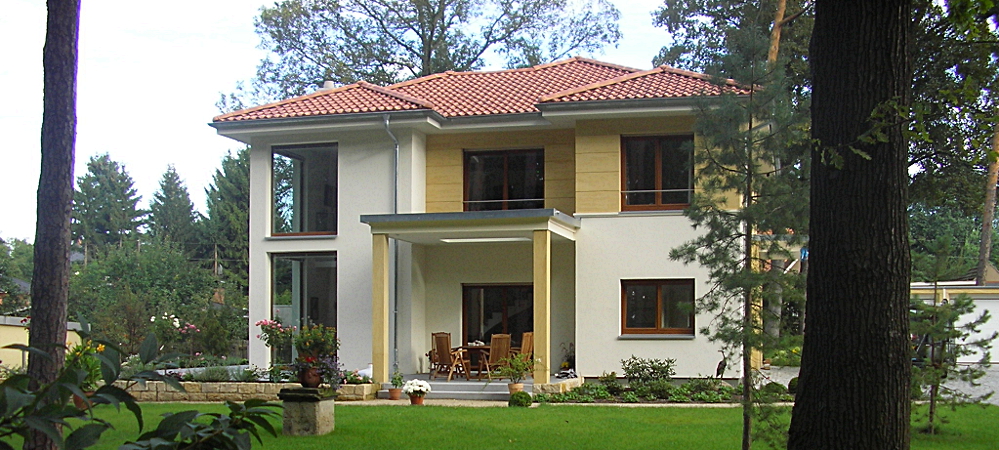
Plaster facade or thermal insulation composite system with reinforcing layer
On plaster surfaces or thermal insulation composite system with reinforcement, the flexible sandstone is bonded directly. Dispersion adhesives or mineral adhesives that are suitable for outdoor use are used. So even large areas can be made in sandstone. Through different installation techniques (with or without joint pattern) different appearances are achieved.
In a facade cladding without joint pattern, the surface appears as a continuous sandstone slab. However, for this type of installation, the area should not be too large, as even massive stone slabs can only be produced up to a certain size. Too large areas are therefore unnatural.
For processing with the joint image, the desired formats must be cut beforehand. The laying on the facade is then done in grid or bandage, so as to produce certain optical effects, such. B. as facade cladding with large-scale natural stone masonry.
The image example shows an industrial building in Thuringia. Here formats of 85×55 cm were processed with horizontal grain in the bandage. The bonding took place on impact. The butt joints were then tightened, so that very narrow chamfered fugue and thus a very fine joint pattern was created.
Plaster facade with horizontal grooves as optical structure
In this facade cladding on a detached house in Dresden, a plaster facade, which was additionally structured by horizontal grooves, had to be subsequently covered with flexible sandstone. The processing takes place here just as in a conventional plaster facade, but for this application, the necessary formats in height previously cut so that the area between the grooves plus the groove depth is completely covered. The horizontal impact between the formats lies in the middle of the groove.
The format length is freely selectable in this case. Here, the lengths were divided in such a way that the optical impression of a bandage was created again by half-format offset. The vertical joints were designed as a fine Keilfugen and thus come back significantly compared to the strong horizontal grooves.





